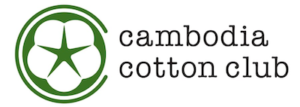*Malathion (Marathon), used in the pesticide contamination incident, is also included in the certified organic pesticides. It is an organophosphorus and organosulfur insecticide. The largest amount in the world, 12,600 tons, is used, with sales of more than 16.8 billion yen.
Organic cotton is allowed to use insecticides approved by its certifying agency.
Browsing websites on the Internet, you will often see the definition: "Organic cotton is cotton that is grown using organic fertilizers and traditional growing methods, without the use of insecticides, herbicides, or chemical fertilizers.
The most prestigious and strict standards in the world, the certifying organization allows the use of more than 100 insecticides. This includes malathion, which has made headlines for its pesticide contamination.
Insecticides banned for use in cotton-producing countries should, of course, not be allowed. However, with the exception of the U.S. and Australia, most cotton-producing countries are poverty-stricken. The distribution of illegal pesticides is also a constant problem in Cambodia. In India, it was not uncommon to find organic fields and regular cotton fields adjacent to each other. Sprayed (sprayed) pesticides are carried by the wind. It is first and foremost impossible to distinguish between organic and regular cotton.
There are also descriptions of "beneficial" insects being released in place of pesticides. If ladybugs, which prey on insects that feed on cotton, were bred in large numbers as "beneficial insects" and released en masse into the fields, they would do great damage to the ecosystem. Cotton fields are often vast fields that stretch far beyond the horizon. In fact, there was a case in the U.S. where the number of released ladybugs became so large that they infested every corner of a house, and were treated as "pests" instead of "beneficial insects.
It is emphasized that consumers who purchase the more expensive organic cotton are the beneficiaries who enjoy the benefits. The words, "Care for your delicate mouth, ears, and eyes with gentle organic cotton," "Safe and secure material for babies," "Cool in summer and warm in winter because it is not forcibly harvested by defoliants or machines," and many other consumer-oriented benefit statements are accompanied by appealing photos.
In this article, "cool in summer and warm in winter" will be explained. A cross-sectional view of cotton fibers shows that they have long, narrow spaces called lumens. Organic cotton is not forcibly harvested by defoliants or machines, so the lumen remains clean and has low thermal conductivity, which is why it is "cooler in summer and warmer in winter.
Regarding the labeling rules for organic cotton, there is a summary report compiled by the Organization for Small & Medium Enterprises and Regional Innovation, Japan. The report concludes that "there is no difference between organic cotton and regular cotton as fibers based on scientific verification.
This proves that "cool in summer and warm in winter" is baseless. What is the evidence for the other "sales talk" of organic cotton?
( to be continued )
